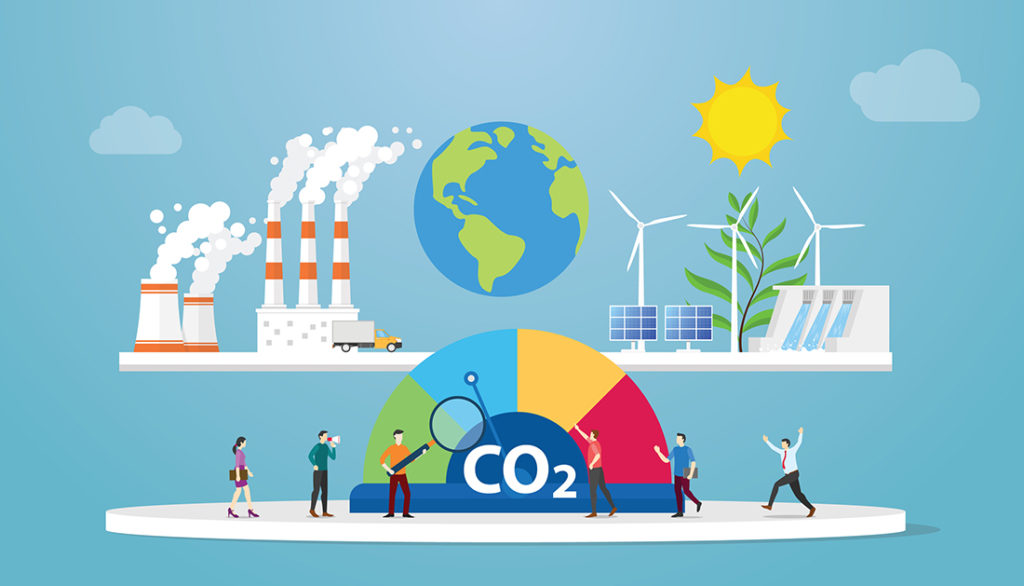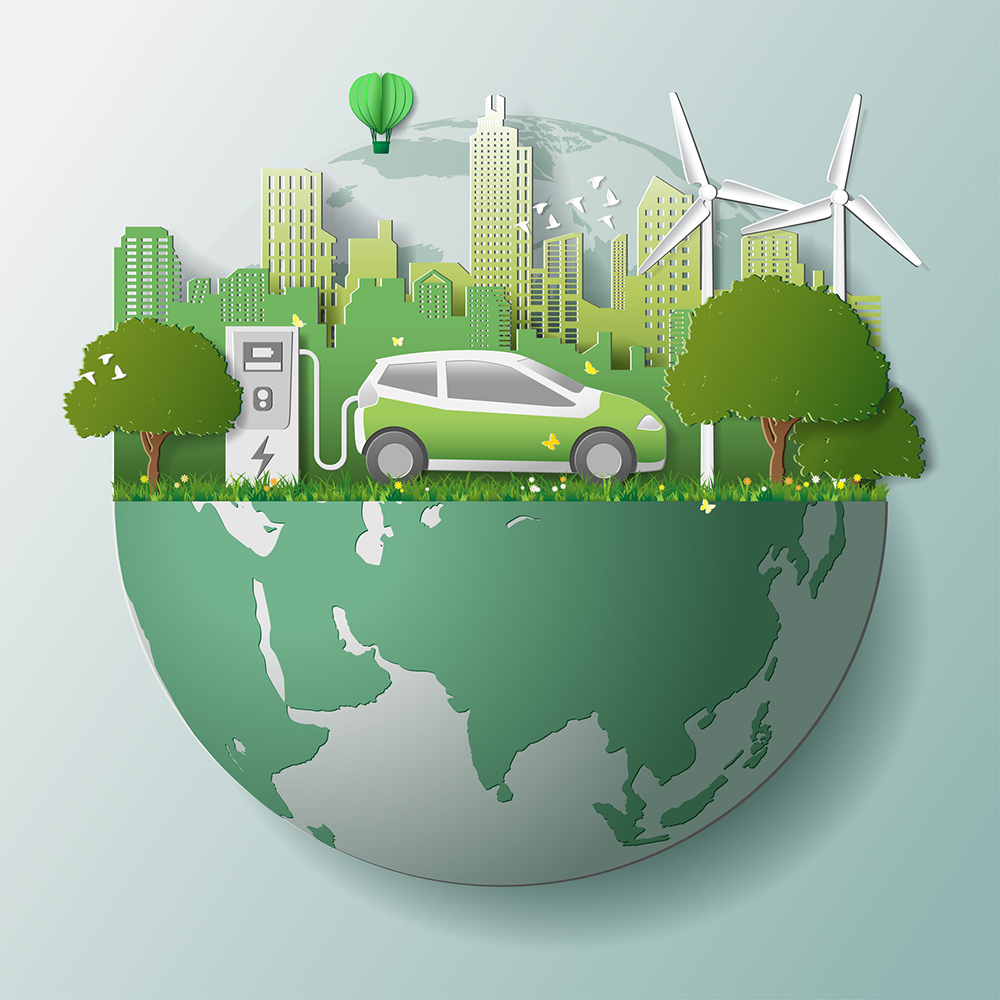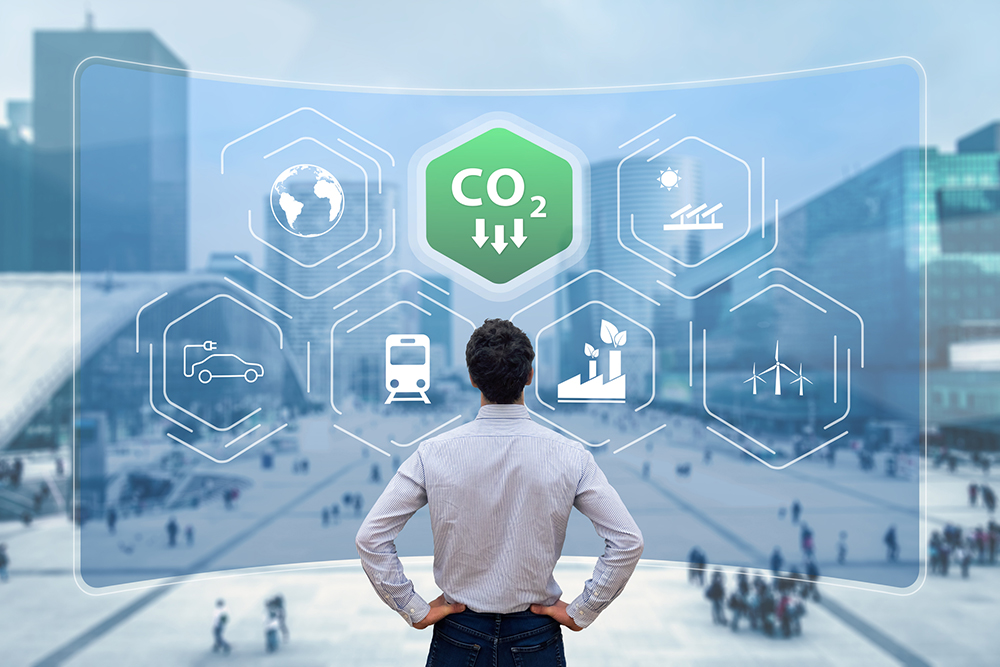The energy transition is key to stopping climate change and eliminating the carbon footprint. Across countries, people need to start shifting into more sustainable practices and implement green industrial solutions.
The progress toward energy transition is already happening in many countries. Nations are setting up deadlines for when they will become carbon-neutral. The dates, such as 2050 and 2060, might seem distant, but countries must implement more renewable energy sources today to achieve this.
Few people would have imagined the scale and pace of the energy transition which we are witnessing today.
Adnan Z Amin, Director-General International Renewable Energy Agency (IRENA)
Similar to the EV Index we did at the beginning of this year, this time, we want to look closer into the general energy transition, not only electric vehicles. Which countries are ready for net-zero and have reduced gas emissions targets? Is carbon neutrality by 2050 enough? What does it mean for Europe and the rest of the world?
Renewable electricity growth
Renewables have become more and more popular. The use of renewable energy is on the rise , and in a sector that is expanding, renewable energy offers clean energy that will help protect the environment. Besides, the renewable energy sector creates more jobs in four main sectors: transportation, solar energy, air and water heating/cooling, and power generation. Many countries see the potential in renewables and want to use clean power more often.
The renewable energy industry accounts for over 20% of the world’s energy supply. There are few locations on the planet where grids are powered almost entirely by renewable energy. To know more about the grid, find out how clean energy sources provide energy to a city or town.
Carbon neutrality – is it possible?
Countries and governments around the world set deadlines for when they will be ready for net-zero. According to the World Economic Forum, the aim of having net-zero emissions by 2050 has been set or is being considered by more than 130 nations.

Energy & Climate Intelligence Unit data shows that some countries, such as the Maldives or Bangladesh, might be carbon-neutral by 2030. Finland has a goal of reaching carbon neutrality by 2035, Iceland by 2040. European countries, including Germany, Sweden, and Portugal, have a deadline by 2045. Switzerland, the United States, South Korea, Japan, and the European Union strive toward carbon neutrality by 2050. Interestingly, two of the world’s biggest and most powerful countries, Russia and China, have set a goal of becoming carbon-neutral by 2060. Why so late? Read on to find out.
A ranking of the most prepared countries
Besides the targets that countries focus on, there are initiatives that nations have started already, such as signing climate policies, deciding what and how much to invest, and the amount of renewable energy sources already in use. It makes them rank higher in the transition towards reducing greenhouse gas emissions. It means they are closer to achieving carbon-neutrality and reaching their green energy goals within a shorter time span.
The newest World Economic Forum, The Green Future Index 2022, shows the difference between 2021 and 2022 years by looking closer at 76 nations. Recently, some countries improved their green energy strategies and now rank higher.
Top 10 countries leading the energy transition
- Iceland
- Denmark
- Switzerland
- Netherlands
- Norway
- Sweden
- United Kingdom
- Finland
- France
- Germany
After these countries above, there are others that are making some progress toward building a greener future:
- South Korea
- Belgium
- Ireland
- Spain
- Canada
- Poland
- Italy
- Portugal
- Japan
- Costa Rica
- United States
- Greece
- Austria
- Hungary
- Bulgaria
- China
- Czech Republic
- Luxembourg
- Singapore
- Israel
Iceland
Iceland is a role model when it comes to a positive sustainable energy attitude. Iceland made the shift from coal and oil to renewable sources of energy like geothermal district heating systems and hydro projects, among others. Iceland is known as ‘the land of fire and ice’, and the country’s location allows them to access renewables. And the country currently produces more electricity than it consumes.
Denmark
Denmark is one of the leaders in net-zero. They use combined heat, power plants and wind power on a big scale. As per IEA data, it has the highest share of wind in both total primary energy consumption and electricity. Denmark is recognised worldwide for integrating variable renewable energy while maintaining a secure electrical-power grid.
Switzerland
With Sweden, Norway, and Denmark at the top of the ranking, the Scandinavian region is driving the energy revolution. According to Swissinfo, Switzerland receives 75% of its energy from renewable sources. Due to a carbon-free energy sector that is primarily nuclear and hydro generating, Switzerland has one of the lowest carbon intensity.
Netherlands
The Netherlands ranks high in the global energy trade. Most Dutch energy focuses on the transition into low-carbon energy systems. They have plans to only use energy coming from renewables by 2050 but also, like Denmark, they want to reduce greenhouse gas emissions by 49% by 2030, as IEA noticed.

Norway
According to a new IEA policy evaluation, Norway can speed up the reduction of emissions from fuel production, transportation, and industry by utilising clean electricity and energy innovation.
In Norway, renewable energy sources account for 98% of the electricity generated, which means it is one of the countries where most of the current energy comes from renewable energy sources, mostly based on flexible hydropower. Find out more about hydrogen applications here.
Sweden
Sweden is and will continue to be one of the top 10 countries that work on environmental and climate efforts as the government is putting more green energy ideas into the transport system, agriculture, infrastructure, welfare, and offering more job prospects.
Already in 2021, 54% of Swedish power came from renewables. 75% of electricity production comes from hydroelectric (45%), nuclear (30%) power, and more than 17% comes from wind power, according to Sweden.se.
United Kingdom
The British government put in place a Net Zero Strategy focusing on green policies, proposals, and cross-cutting actions to reduce the number of carbon emissions. As per the source, the goal is that all of the UK’s electricity will come from renewables by 2035, and there are plans to plant 18 million trees by 2030. They also plan to place a ban on the sale of diesel and petrol cars from 2030. In recent years, the United Kingdom has implemented better initiatives, placing them higher in the ranking.
Finland
Finland has implemented high growth prospects for green hydrogen, solar electricity, and wind energy. As provided by the Finnish company KPMG, the share of renewable energy sources in Finland’s overall energy consumption has increased from 27% to about 36% in the last ten years. According to Finland’s National Energy and Climate Strategy, the objective is to grow the use of renewable energy so that it accounts for more than half of the country’s total energy consumption by the end of 2030.
France
France is one of the global leaders on climate issues, but it also needs to speed up its transition to clean energy to achieve its long-term objectives. Since 2015, France has had one of the most thorough regulatory and policy frameworks in the world for the development of hydrogen. Nearly 20% of France’s total final energy consumption last year came from renewable sources, as reported by RFI.
Germany
Germany is the biggest producer of CO2 emissions in the EU. The country continues to generate significant emissions compared to other major polluters in the union, such as France, Italy, and Poland, despite levels declining by roughly 20% since 2005, according to Statista’s CO2 emissions report. This is mainly due to the fact that coal continues to be a dominant energy source in Germany.
As per Clean Energy Wire, 2022 is a critical year for Germany’s historic energy transition because it will mark the beginning of the country’s new administration. The focus is on putting into action ambitious climate policies, which include a quicker phase-out of coal and a significant increase in renewable energy sources.
Coal is the dirtiest fossil fuel, which emits about 50% more CO2 than natural gas. You can read more about gas and its role in climate neutrality here.
Are China, the US and the EU ready for green energy?
The majority of greenhouse gas emissions are usually produced by the biggest cities. Approximately 76% of the world’s emissions are covered by net-zero objectives established by more than 70 nations, including the three biggest polluters: China, the United States, and the European Union, as reported by the international organisation, United Nations.
China, the US and the EU are coming up with solutions and goals to reach a net-zero future. China is due to release its next five-year plan, and the US will likely carry out progressive campaign promises, such as re-signing the Paris Agreement and establishing a 2050 net-zero target. The EU has unveiled its newest structural funds programme.

China
According to the World Population Review, China has five of the biggest solar energy manufacturing facilities and the largest production of wind turbines. By 2030, China wants 35% of its energy to come from renewables.
If the ranking was about the biggest investments, China would rank first, as it is the world’s top investor in renewable energy, primarily solar and wind energy. Even though China invested a lot of money into energy transition in 2021, it places below the top 20 countries that are the closest to their renewable energy sources goals. Why? China is also one of the biggest carbon emitters.
United States
According to Annual Energy Outlook, natural gas and petroleum will continue to be the most commonly used energy sources in the United States until 2050. Still, renewable energy will increase at the quickest rate.
While natural gas exports increasingly drive natural gas output, US crude oil production has reached record highs. The electricity mix of coal and nuclear power declined due to reduced technology costs for the advantage of wind and solar power. Incentives for wind and solar power enable fierce competition with natural gas for electricity generation.
European Union
European countries are at the top of the ranking, as many nations put plans and strategies to reach carbon-neutral quicker. According to Eurostat, at the EU level, the proportion of renewable energy in total energy consumption progressively climbed from 9.6% in 2004 to 22.1% in 2020, exceeding the EU target of 20% renewables by that year.
The decline in fossil fuel use brought on by the COVID-19 pandemic contributed to the increased share of renewable energy in 2020. The new EU target is 32% for 2030; however, this number is under revision, and some European countries have set their own deadlines.
Ranking conclusions
The energy industry is undergoing a significant revolution. Most countries have to focus on the energy transition to stop climate change and reduce the amount of greenhouse gas emissions they produce. Achieving carbon reduction goals requires implementing changes now.
Eaton worked with Association for Renewable Energy & Clean Energy (REA) on their Energy Transition Readiness Index 2021 to prove that if decarbonisation targets are to be met, massive amounts of new flexible resources are required. Especially in the main European economies of France, Germany, Italy, Spain, and the UK. There needs to be a focus on technological innovation and cross-industry collaboration. Markets will need to change in order to incentivise private investment in flexible energy assets. Some of the proposed investments include intelligently regulated EV chargers, battery and thermal energy storage, and grid-interactive data centres.
Distrelec is a distributor of greener solutions and provides its customers with EV charging products, infrared cameras and energy storage, such as power supplies and batteries. You can read more about batteries and their importance in energy transition here or find out how useful thermal cameras are in the solar PV industry.










